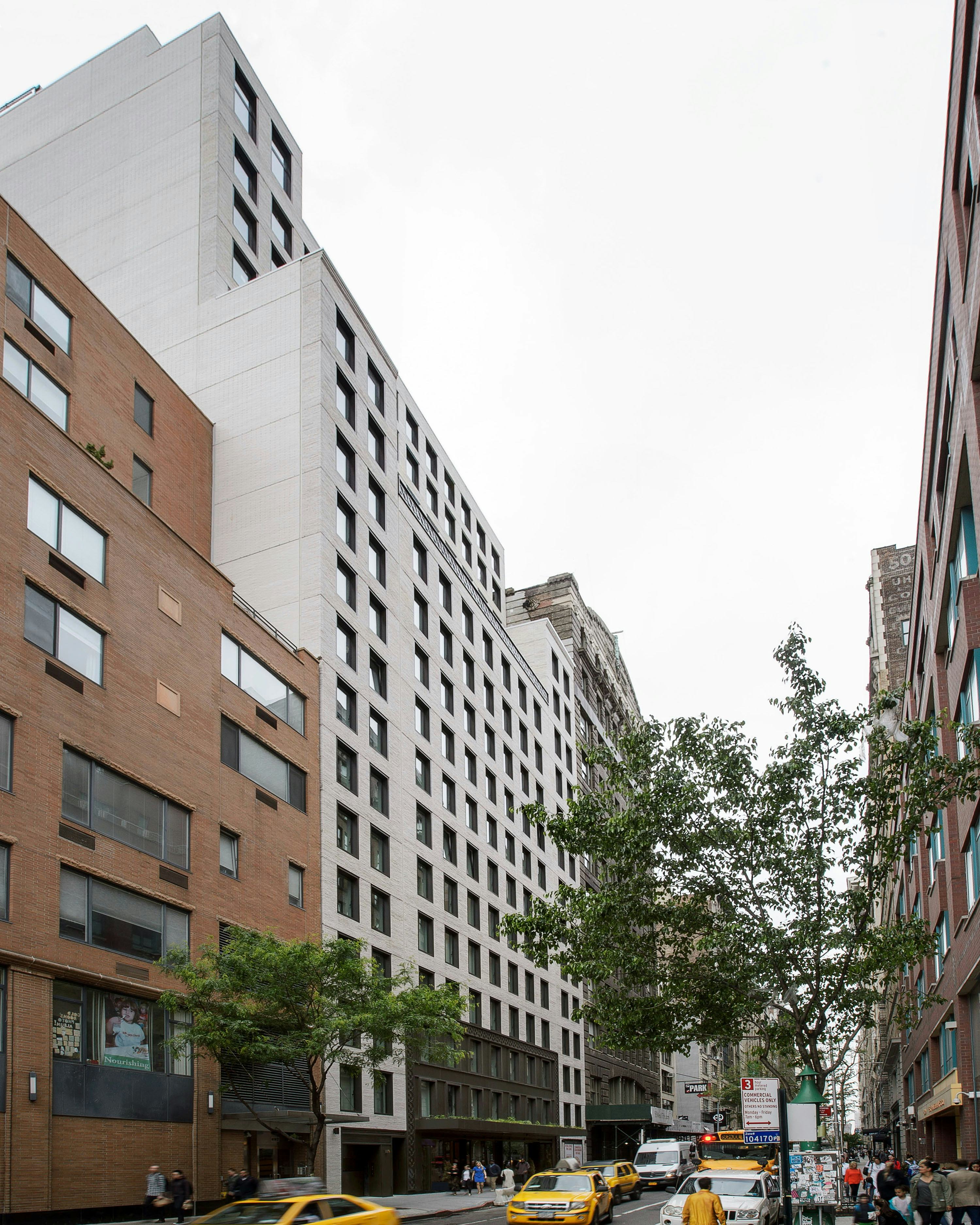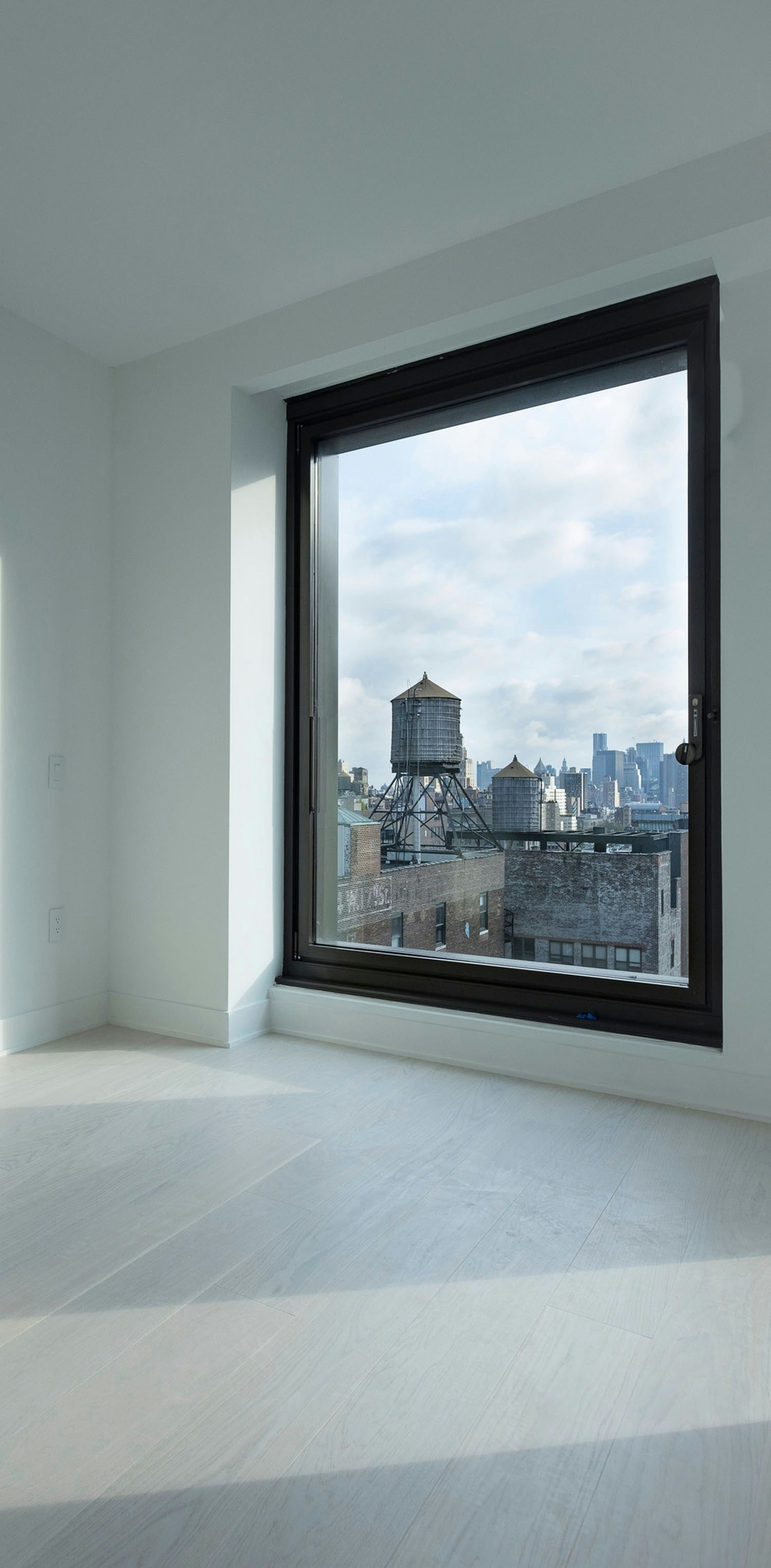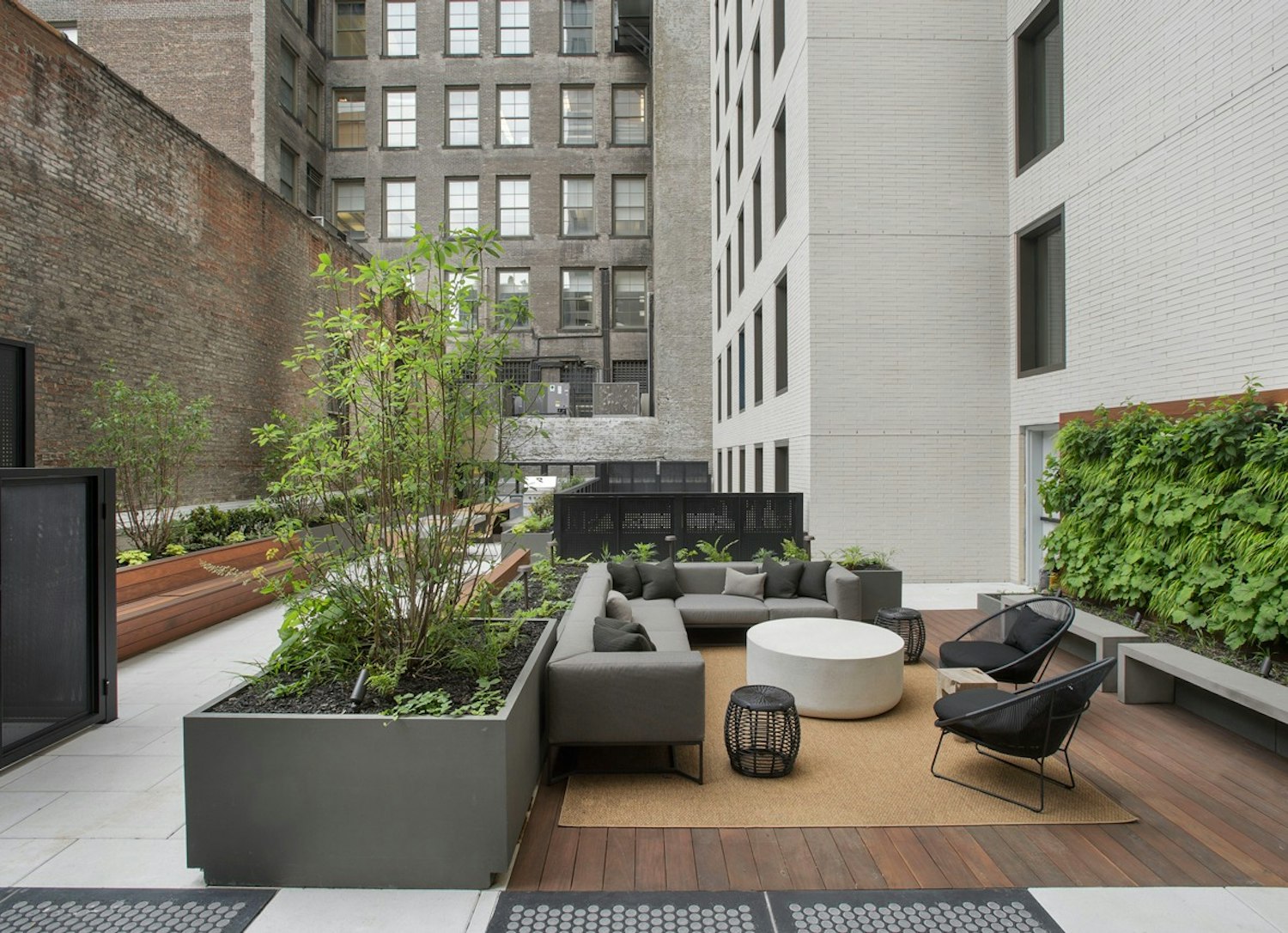
55 West 17th
115,000 square feet
19 stories, 53 units
New York, New York
2016


Single-pane, bronze-framed windows set within a grid of handmade white bricks define the façade of this residential building, bridging the understated refinement of modern architecture and the rough-hewn quality of traditional construction.

This 19-story residential building exists between worlds. Not only does it bridge two unique Manhattan neighborhoods—Chelsea, the eclectic and diverse center of contemporary art in New York City, and Ladies’ Mile, the staid neoclassical commercial district—it also bridges two distinct design sensibilities: the understated refinement of modern architecture and the rough-hewn quality of traditional construction. The result is an unmistakably contemporary building that has the warmth and familiarity of classic New York City architecture.
This balance was achieved by bringing texture to the building with a distinct palette of materials—most notably, white Petersen brick. The extra-long, rough clay brick is handmade according to a centuries-old tradition that uses wooden molds along with a firing process that gives each brick a slightly different texture and shade. Although nothing in the area is exactly like it, the brick evokes the historic masonry buildings found throughout Chelsea and Ladies’ Mile, as well as the nearby Flatiron District.
The connection to the past is reinforced by 55 West 17th Street’s composition, a familiar three-bay, tripartite scheme informed by zoning codes and tradition. Similar to the grand department stores of Ladies’ Mile, the building’s entry and lower floors are treated distinctively, with bronze-colored metal cladding decorated with an abstract pattern of overlapping circles.
Handmade bricks give the 17th Street façade a sense of craftsmanship that contrasts with the much more precise grid of oversized single-pane windows. A pattern of overlapping circles surrounds the building’s metal-clad base.



Within, 55 West 17th Street’s lobby features projecting wall panels, integrated seating, and a custom patterned floor composed of two different types of marble.



Dark, saw-cut finishes on the kitchen cabinets create a striking contrast with the wide-plank oak floors.


Notable elements of 55 West 17th Street’s double-height residential lounge include plaster walls, access to the central courtyard, and custom concrete pavers that match the proportions of the exterior brick cladding. A spiral stair finished in walnut leads up to a small screening room.




